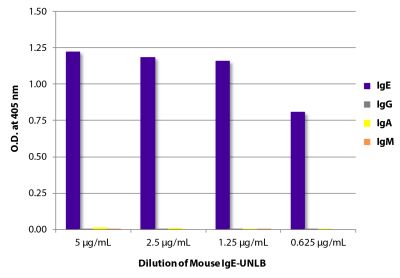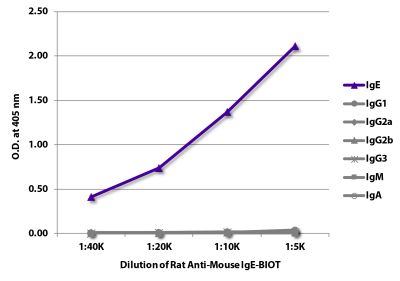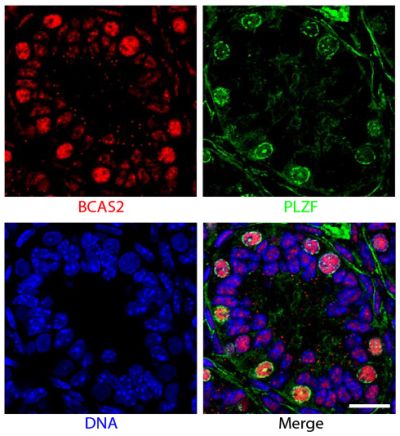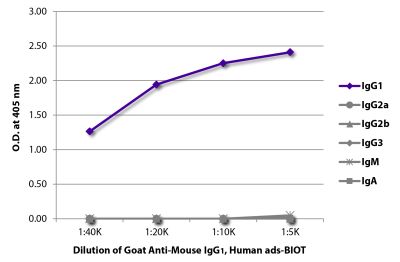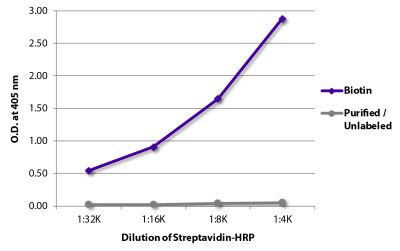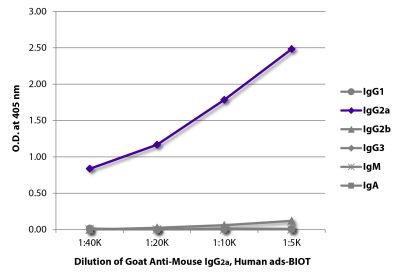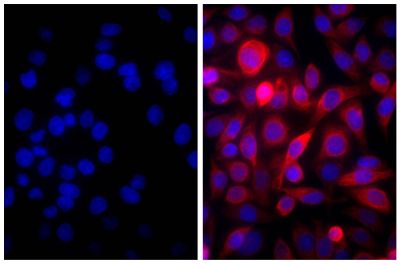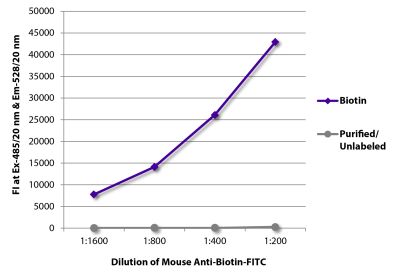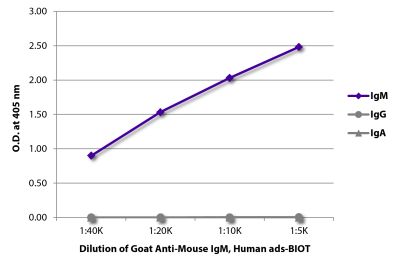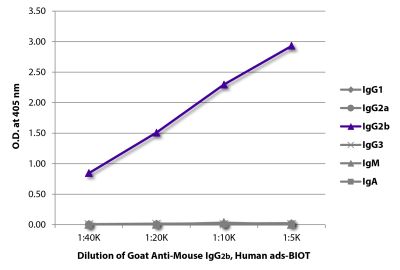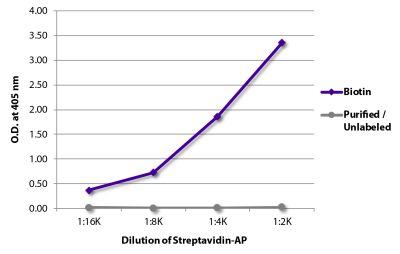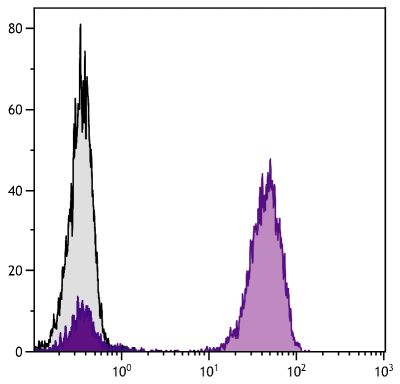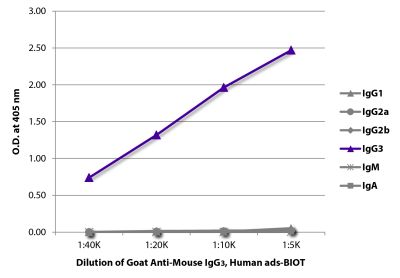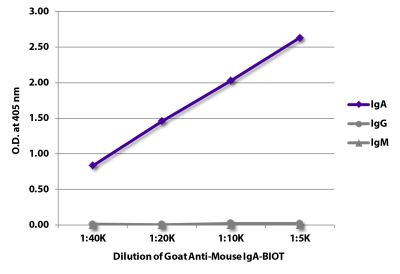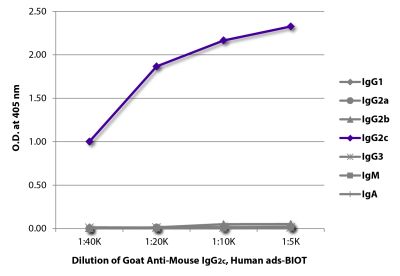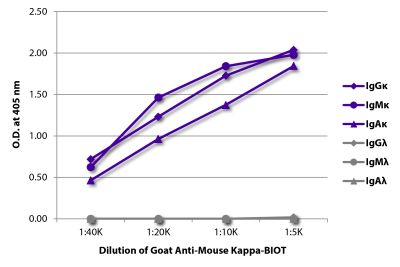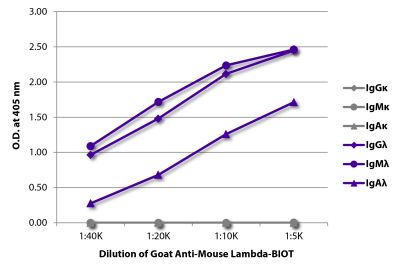Goat Anti-Mouse IgE-BIOT
Cat. No.:
1110-08
Goat Anti-Mouse IgE-Biotin antibody for use in ELISA, flow cytometry, immunocytochemistry, western blot, and immunoprecipitation assays.
$301.00
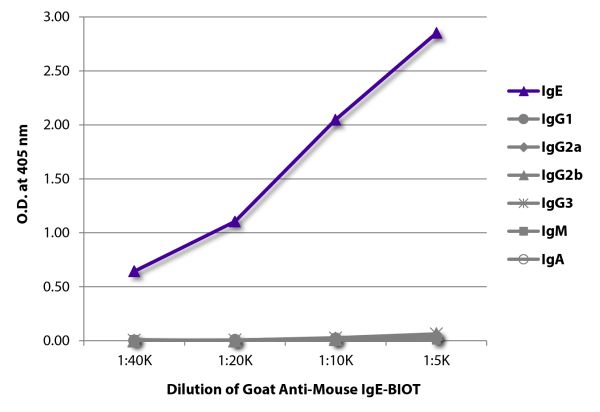

| Isotype | Goat IgG |
|---|---|
| Isotype Control | Goat IgG-BIOT |
| Specificity | Reacts with the heavy chain of mouse IgE |
| Source | Pooled antisera from goats hyperimmunized with mouse IgE |
| Cross Adsorption | Mouse IgG1, IgG2a, IgG2b, IgG3, IgM, and IgA; may react with immunoglobulins from other species |
| Purification Method | Affinity chromatography on mouse IgE covalently linked to agarose |
| Conjugate | BIOT (Biotin) |
| Buffer Formulation | Phosphate buffered saline containing < 0.1% sodium azide |
| Clonality | Polyclonal |
| Concentration | 0.5 mg/mL |
| Volume | 2.0 mL |
| Recommended Storage | 2-8°C |
| Applications |
Quality tested applications for relevant formats include - ELISA 1-17 FLISA Other referenced applications for relevant formats include - Flow Cytometry 18 Immunohistochemistry 19 Western Blot 20,21 Immunoprecipitation 22 |
| RRID Number | AB_2794605 |
| Gene ID |
380792 (Mouse) |
| Gene ID Symbol |
Ighe (Mouse) |
| Gene ID Aliases | Gm900 |
| UniProt ID |
P06336 (Mouse) |
| UniProt Name |
IGHE_MOUSE (Mouse) |
Documentation
Certificate of Analysis Lookup
Enter the Catalog Number and Lot Number for the Certificate of Analysis you wish to view
- 1. Costa-Pinto FA, Basso AS, Britto LR, Malucelli BE, Russo M. Avoidance behavior and neural correlates of allergen exposure in a murine model of asthma. Brain Behav Immun. 2005;19:52-60. (ELISA)
- 2. Andrade MC, Menezes JS, Cassali GD, Martins-Filho OA, Cara DC, Faria AM. Alcohol-induced gastritis prevents oral tolerance induction in mice. Clin Exp Immunol. 2006;146:312-22. (ELISA)
- 3. Prescott VE, Forbes E, Foster PS, Matthaei K, Hogan SP. Mechanistic analysis of experimental food allergen-induced cutaneous reactions. J Leukoc Biol. 2006;80:258-66. (ELISA)
- 4. Arnaboldi PM, Roth-Walter F, Mayer L. Suppression of Th1 and Th17, but not Th2, responses in a CD8+ T cell mediated model of oral tolerance. Mucosal Immunol. 2009;2:427-38. (ELISA)
- 5. Paveglio S, Puddington L, Rafti E, Matson AP. FcRn-mediated intestinal absorption of IgG anti-IgE/IgE immune complexes in mice. Clin Exp Immunol. 2012;42:1791-800. (ELISA)
- 6. Kawabe Y, Hayashida Y, Numata K, Harada S, Hayashida Y, Ito A, et al. Oral immunotherapy for pollen allergy using T-cell epitope-containing egg white derived from genetically manipulated chickens. PLoS One. 2012;7(10):e48512. (ELISA)
- 7. Kin NW, Stefanov EK, Dizon BL, Kearney JF. Antibodies generated against conserved antigens expressed by bacteria and allergen-bearing fungi suppress airway disease. J Immunol. 2012;189:2246-56. (ELISA)
- 8. Lochmatter C, Schneider CL, Ingram K, Keiser J, Schifferli JA. Schistosoma mansoni tetraspanning orphan receptor (SmTOR): a new vaccine candidate against schistosomiasis. Clin Exp Immunol. 2012;170:342-57. (ELISA)
- 9. Durham CG, Schwiebert LM, Lorenz RG. Use of the cockroach antigen model of acute asthma to determine the immunomodulatory role of early exposure to gastrointestinal infection. Methods Mol Biol. 2013;1032:271-86. (ELISA)
- 10. Vukcevic M, Zorzato F, Keck S, Tsakiris DA, Keiser J, Maizels RM, et al. Gain of function in the immune system caused by a ryanodine receptor 1 mutation. J Cell Sci. 2013;126:3485-92. (ELISA)
- 11. Brachs S, Turqueti-Neves A, Stein M, Reimer D, Brachvogel B, Bösl M, et al. Swiprosin-1/EFhd2 limits germinal center responses and humoral type 2 immunity. Eur J Immunol. 2014;44:3206-19. (ELISA)
- 12. Zhou W, Goleniewska K, Zhang J, Dulek DE, Toki S, Lotz MT, et al. Cyclooxygenase inhibition abrogates aeroallergen-induced immune tolerance by suppressing prostaglandin I2 receptor signaling. J Allergy Clin Immunol. 2014;134:698-705. (ELISA)
- 13. Joshi VB, Adamcakova-Dodd A, Jing X, Wongrakpanich A, Gibson-Corley KN, Thorne PS, et al. Development of a poly (lactic-co-glycolic acid) particle vaccine to protect against house dust mite induced allergy. AAPS J. 2014;16:975-85. (ELISA)
- 14. Sun R, Tang X, Yao H, Hong S, Yang Y, Kou W, et al. Establishment of a new animal model of allergic rhinitis with biphasic sneezing by intranasal sensitization with Staphylococcal enterotoxin B. Exp Ther Med. 2015;10:407-12. (ELISA)
- 15. Bracken SJ, Adami AJ, Szczepanek SM, Ehsan M, Natarajan P, Guernsey LA, et al. Long-term exposure to house dust mite leads to the suppression of allergic airway disease despite persistent lung inflammation. Int Arch Allergy Immunol. 2015;166:243-58. (ELISA)
- 16. Patel PS, Kearney JF. Neonatal exposure to pneumococcal phosphorylcholine modulates the development of house dust mite allergy during adult life. J Immunol. 2015;194:5838-50. (ELISA)
- 17. Chen X, Lin J, Pan T, Cao M, Shi C, Cai Q, et al. Investigation of the hazardous substance causing crayfish-induced rhabdomyolysis via a mouse model, a hemolysis assay, and a cytotoxicity assay. Fish Sci. 2015;81:551-8. (ELISA)
- 18. Vogel L, Lüttkopf D, Hatahet L, Haustein D, Vieths S. Development of a functional in vitro assay as a novel tool for the standardization of allergen extracts in the human system. Allergy. 2005;60:1021-8. (FC)
- 19. Samarasinghe AE, Hoselton SA, Schuh JM. The absence of VPAC2 leads to aberrant antibody production in Aspergillus fumigatus sensitized and challenged mice. Peptides. 2011;32:131-7. (IHC)
- 20. Burns TA, Westerman T, Nuovo GJ, Watts MR, Pettigrew A, Yin C, et al. Role of oxidative tissue injury in the pathophysiology of experimentally induced equine laminitis: a comparison of 2 models. J Vet Intern Med. 2011;25:540-8. (WB)
- 21. Nieuwenhuizen NE, Meter JM, Horsnell WG, Hoving JC, Fick L, Sharp MF, et al. A cross-reactive monoclonal antibody to nematode haemoglobin enhances protective immune responses to Nippostrongylus brasiliensis. PLoS Negl Trop Dis. 2013;7(8):e2395. (WB)
- 22. Hazenbos WL, Wu P, Eastham-Anderson J, Kinoshita T, Brown EJ. Impaired FcεRI stability, signaling, and effector functions in murine mast cells lacking glycosylphosphatidylinositol-anchored proteins. Blood. 2011;118:4377-83. (IP)
See More


